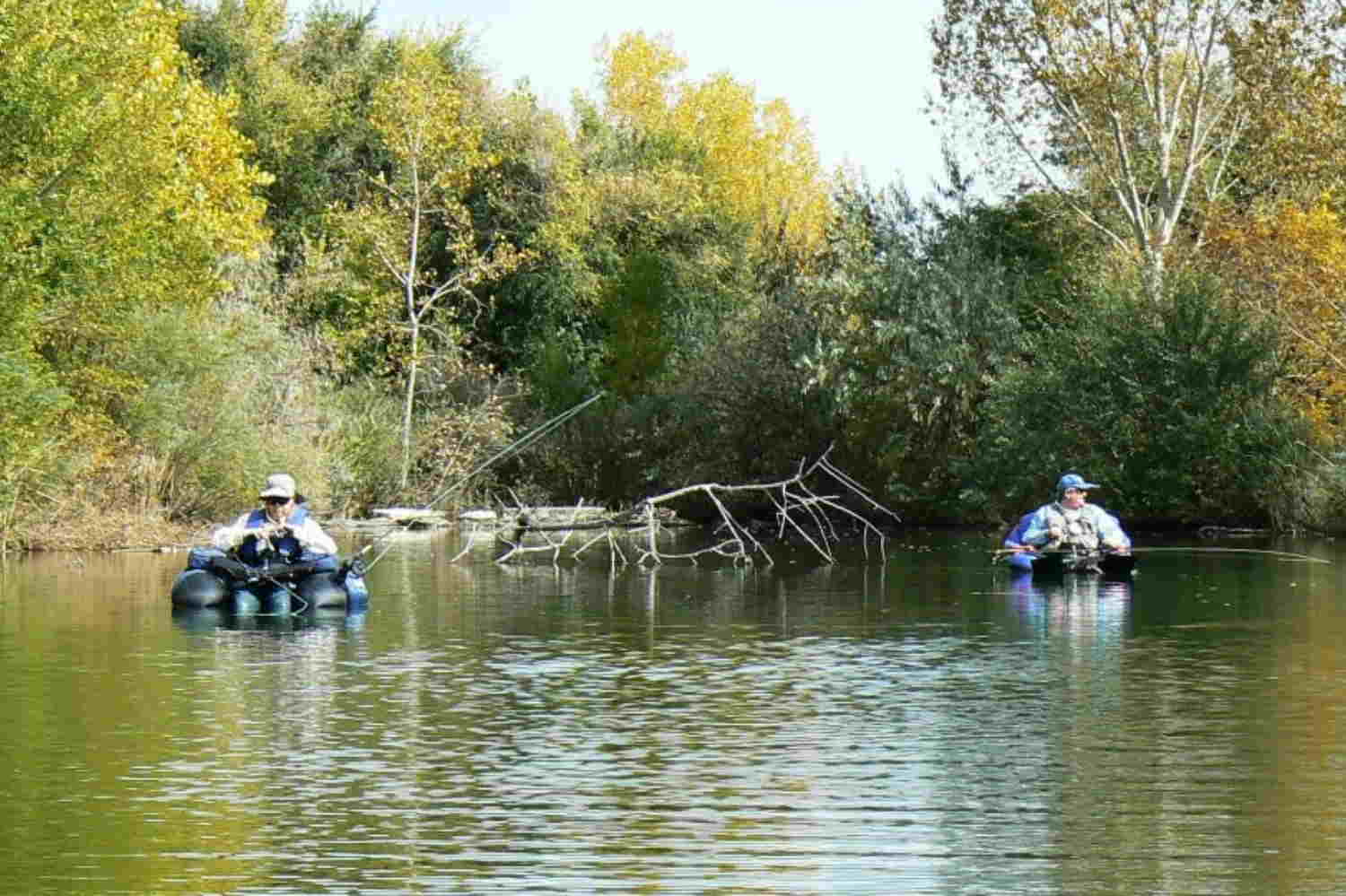Is Belly Boat Fishing Worth trying?
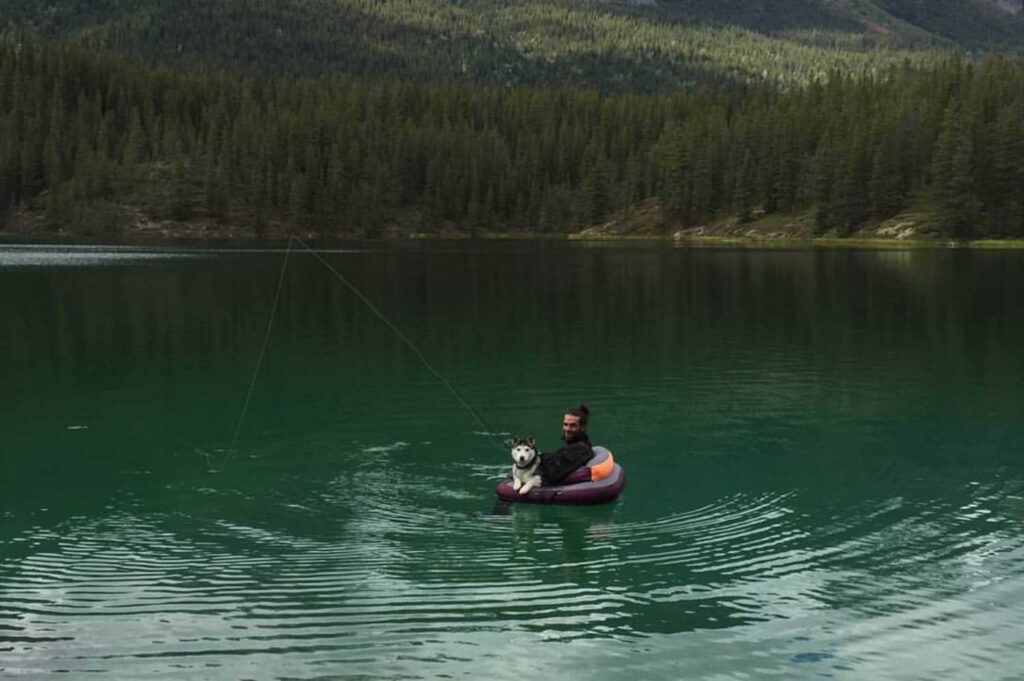
Do you think of yourself as an adventurous type? Are fishing trips at the lake just too dull for you? If so, have we got a sports activity for you to try?
Have you ever heard of belly boat fishing? It’s a great way to immerse yourself in the outdoors, get some exercise, and enjoy your time on the water.
This is sure to get your adrenaline pumping and take your love of fishing up a notch. This unique and thrilling form of angling involves lying face down in specially designed boats that are equipped with all the gear necessary for pitching bait far out into the water.
Not only can it be incredibly rewarding from both a stress relief and recreational perspective, but it also requires minimal investment
With belly boat, not only do you get to experience some great catches, but it also allows anglers to explore their undiscovered surroundings from a new perspective.
In this blog post, we’ll discuss what fishing from a belly boat entails so that you can decide if it could be right for you. Keep reading our post today and learn how belly boat fishing can elevate your next lake or river adventure!
What is Belly Boat?
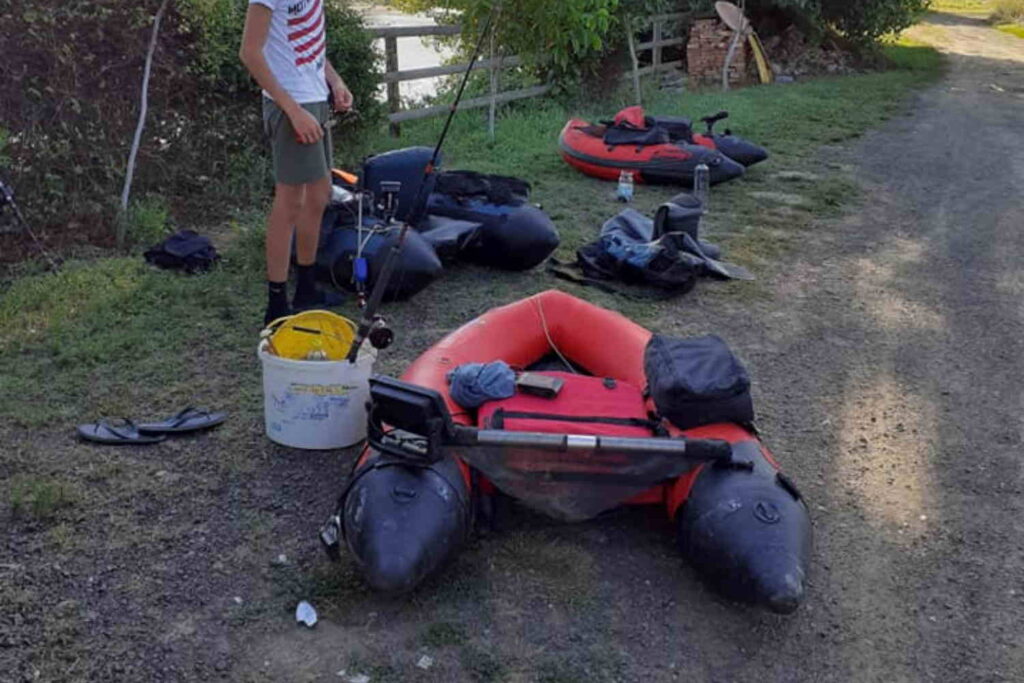
The belly boat has journeyed a long way from its humble origins – a clever adaptation of the inner tubes found in tires.
The first O-Boats were far from a comforting and secure experience, Single chambered bladders could put lives in jeopardy if sprung a leak when out at sea. A better safety option than relying solely on fins attached to one’s legs with fabric straps! In this situation, life-threatening hazards could be avoided.
With the development of U-Boats, fly fishing soared to a new level of comfort and safety. These boats were open at one end for easy leg movement and equipped with rod holders and netted baskets designed to store the line.
Alongside these features, they boasted an inflatable backrest as well as fabric pockets on both sides where extra supplies such as snacks or spare clothes could be stored.
The main drawback was that you had to contend with thin fabrics acting like seat cushions – as you are sitting directly within the confines of your boat – meaning that even if there is no leakage from its inner lining, which inevitably let water in.
To combat this problem I use an inflatable pillow giving me extra buoyancy when needed but still did not avoid the access of water to my back.
By leaving behind the many iterations of “Belly-Boats”, we come to perhaps its most perfected form: V-Boats. Retaining the essential elements of this unique craft, while also solving all previous issues posed by U-Boats, today’s Belly Boaters can experience their sport at a level never before seen!
This innovative fishing boat features a division of one main soul into two “banana” inner tubes. These are then further secured with tough nylon material and equipped with spacious zipper pockets as well as velcro fasteners for accessories like rods or landing nets–all ensuring your comfort on the water. While padded holders allow for added convenience by securely holding drinks/bottles. An elevated inflatable seat provides all-day comfort combined with back support – resulting in an unrivaled experience on any body of water!
How does it work?
Whether you’re looking to stay dry or need a bit of extra storage space in your fishing adventures – chest waders combined with fins (or flippers) can be a perfect choice.
Look out for some bonus features when purchasing such as storage between the back of the seat and the “U” curved end plus handy pockets along each side – providing quick access to essential items.
Get the most out of your first belly boat by ensuring you choose one with a rod and net holder located behind the seat. Aim to purchase an option that includes not only oars but also a cord for mooring or towing.
The perfect choice should incorporate additional comfort features like straps beneath the open ends of the tube so your feet can rest comfortably beneath the tube as you paddle. This way you can keep your legs stable and ensure that you won’t be working against yourself.
Why Is It a Great Way to Fish
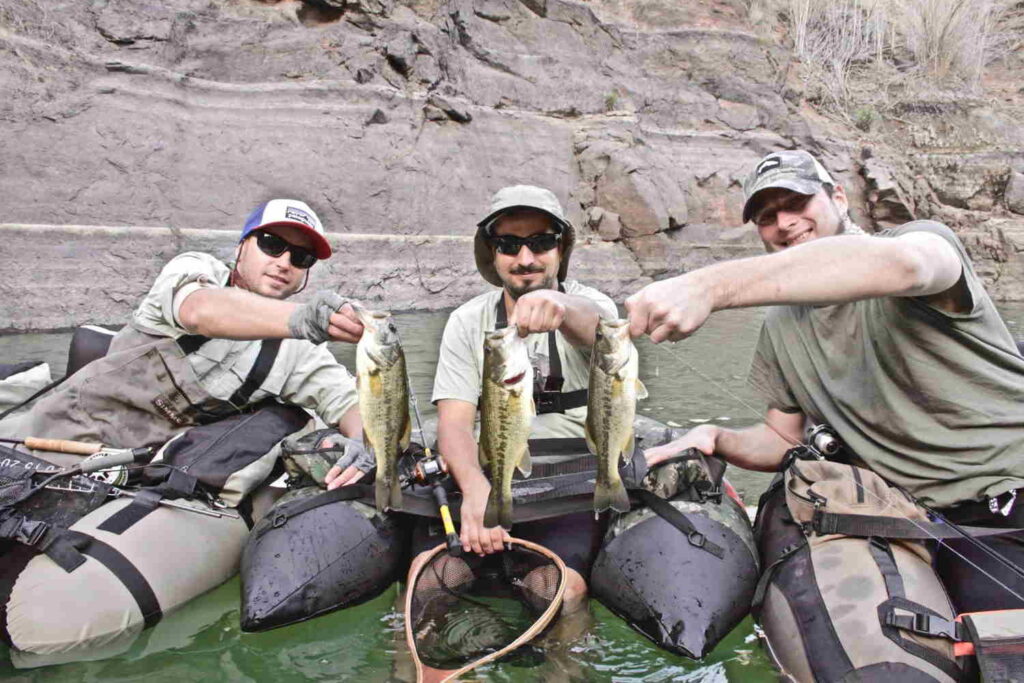
Benefits
Fishing from a belly boat has its own unique set of benefits for anglers looking for an exciting way to fish:
• Easier transport: Belly boats are lightweight and require minimal setup, making them easy to transport when compared to traditional boats.
• Greater maneuverability: The design of these boats allows fishermen to move quickly and easily around obstacles in the water as well as reach tight spots where the fish may be hiding.
• Unobtrusive and precise control with the help of fins: Anglers can use fins to navigate and maneuver more precisely, allowing them to stay in one spot for longer periods.
• Stable platform: Belly boat’s inflatable design makes them stable and secure, even when navigating choppy waters.
• More comfort: Sitting in a belly boat is much more comfortable than standing in a traditional boat, as you can adjust your position and take advantage of the built-in paddles.
• Amount of storage space: Belly boats come with storage compartments, allowing anglers to bring enough gear and tackle on their trips.
• Price (compared to kayak, boat, or paddleboard): Belly boats are usually affordable and easy to maintain, making them a great option for anglers on a budget.
Belly boat fishing is an exciting way to get out on the water that offers many advantages over other forms of angling. So if you’re looking for a new type of fishing experience, why not give it a try? With some basic knowledge and preparation, you can ensure an unforgettable adventure!
Disadvantages:
• Potential for leaks: The inflatable material can be vulnerable to punctures, so some extra caution should be taken when transporting and handling the boat.
• Difficulty navigating strong currents: Belly boats are not designed for paddling against strong currents, as they don’t provide enough resistance.
• Limited capacity: Many belly boats have a weight limit of around 250 pounds, meaning that larger anglers may not find them suitable.
• Lower position when staling fish under surface can reduce the visibility and accuracy of casts.
• Slow movement on the water: Despite being more maneuverable than other forms of fishing, belly boats are still slower than kayaks or paddleboards when it comes to covering greater distances.
• Direct contact with water: As the name suggests, anglers will be sitting in the water when fishing from a belly boat. This can make it more uncomfortable, especially during cold days or trips to colder bodies of water.
• Can’t change the position of the seat: Belly boats don’t offer adjustable seating, so anglers may feel uncomfortable or cramped after long periods of fishing.
Despite some minor drawbacks, belly boat fishing is an exciting way to get out on the water and enjoy a different type of angling experience. With the right preparation and knowledge, you’ll be able to make the most out of your trips!
How To Get Started With Belly Boat Fishing
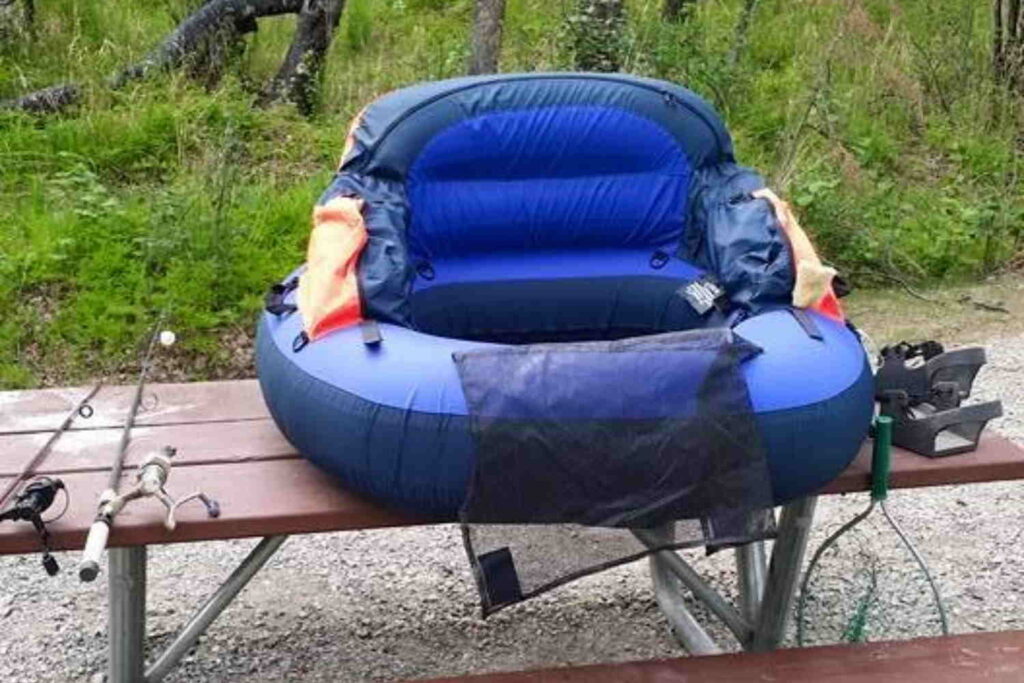
Belly boat fishing is a great way to try something new and exciting, but it can be intimidating for first-timers. Are you ready to take the plunge and start belly-boat fishing? Get off on the right foot by learning a few basics before diving in. With basic instruction and practice, you’ll pick up the basics in no time!
These vessels, designed with an apex behind the angler, allow them to face away as they row – similar to rowing a boat – making navigating a breeze.
They should be able to reach their destination with an up-and-down kicking motion, using alternating legs. Make sure that each leg is bent at the knee: toes pointing downward while keeping your lower leg close enough to form about 45 degrees angle from your upper leg!
Kick forwards and upwards until the angled reach is 150 degrees then return to starting point as the other kicks up similarly.
Pace yourself thoughtfully! Don’t forget to remain calm throughout – bending one’s ankle or breaking through the water’s surface, splashing causes disturbance, scaring any fish away.
By relying on the paddling arc, you’ll swiftly turn right with shorter strokes. Remember that this requires shorter strokes or jabs forward from your right leg while simultaneously pushing backward on your left one; repeating this process till the desired direction has been achieved. Place your lower legs at a 90° angle to your upper leg and toes straight down for success!
To switch direction, reverse this procedure: Forward left and back right – voila!
For those wishing to avoid hours of paddling each day, try out one of our electric-powered belly boats; perfect for easy navigation around obstacles.
Getting the right gear for belly boat fishing
Belly Boat
Belly boating is a great way to get into fly fishing, and it won’t break the bank. An introductory model can typically be found for under $100; however, if you’re looking for something more advanced with better features, prices usually range between $100-200. For those who want top-of-the-line models, they start at around $300 – but chances are an intermediate option will do just fine!
Another option for first-timers out there would be renting before investing: some fishing spots offer rentals so that interested fishermen and women can give it a try with minimal commitment or financial risk involved. Whatever route one chooses to take when exploring this popular fly fishing style – buying or borrowing – in no time at all they’ll see their investment (or rental) payout dividends on the water!
Accessory
Getting the right gear for belly boat fishing is essential for a successful day on the water. Make sure you have everything you need for a safe and enjoyable trip:
Fins
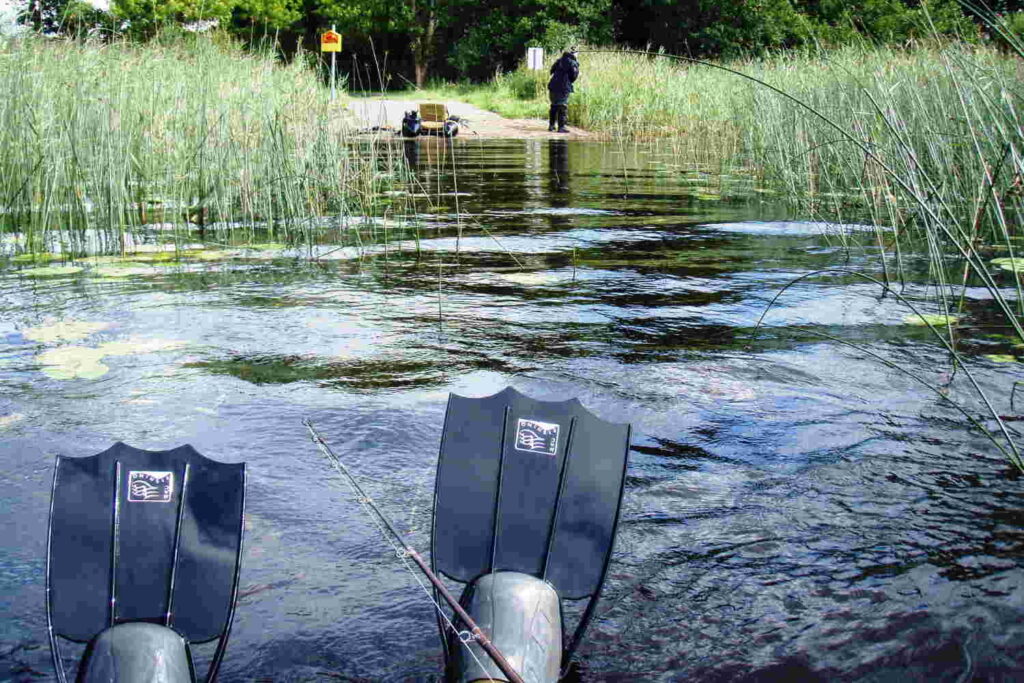
As you embark on your belly fishing boat, don’t forget to equip yourself with fins. These must-have items come in a variety of styles, ranging from sleek backpacking versions to sturdier ankle-supportive options.
Depending on your strength and skill level, different structures of fins will be necessary to maximize underwater maneuverability. Shorter blades generally provide less force than longer ones – but undoubtedly still have the power to make a difference!
When shopping around for these flippers, it is important that they fit over (or inside) wading boots or socks without causing any wear-and-tear; more notably so because loose fastenings can prove hazardous when submerged in liquid environments – thus making security an absolute priority during purchase selection decisions!
Get the best performance from your neoprene sock with just the right length of fin blade. Opt for medium-long fins that are flexible and hard – satisfaction is guaranteed! Don’t overcompensate: having too long of a fin blade won’t help you beat anyone in any race!
With a variety of sizes and support levels available to suit any price point, select whichever style meets your aquatic needs best!
Wader
For optimal comfort and safety while fishing on a Belly-Boat, it is recommended to invest in waders that are larger than what you’d normally need for river angling. This size difference prevents the material from being pushed up towards your crotch due to frequent kicking motions – preventing water leakage into the pants which can be challenging (and potentially dangerous) to fix.
Crocs shoes
Take your adventure to the next level with Crocs shoes designed for use on neoprene socks or waders! Big Crocs shoes offer an ideal, lightweight solution for wading when using a Belly-Boat.
Not only can you walk across the land, but also float in water when boarding a Belly-Boat. With these lightweight rubber boots, if they fall off accidentally while putting your fins on no worries – they will not sink or be lost forever as traditional wading boots would be. Storing them is equally simple as well; stash them away conveniently in the rear mesh area of the boat easily without fear of theft or loss while making shoreside stops during activities!
Pump
When fishing off the beaten path, a pump may be impractical for many anglers. However, when driving to your favorite spot along with a belly boat in tow, having an easily accessible and efficient air pump can make life much easier. It accelerates the inflation of belly boats and helps you avoid feeling winded so that you can spend more time enjoying the activity instead. A nice little touch for an even better experience!
Repair kit and identifying options
Whether you’re an adventurous angler or just enjoy a relaxing day on the lake, having extra security in your belly boat can be invaluable. Be sure to inquire about purchasing a repair kit and identifying options for added safety – like having a crotch strap that prevents sliding down the seat should winds unexpectedly push forward! Having this retaining bar is key as it will keep you from falling out of your vessel; plus, there’s no need to tire yourself out by constantly readjusting back into position.
With the proper accessories on your belly boat, you’ll be able to tailor it for any fishing style. From rod holders and anchors to dry bags – there’s a range of options that can fully enhance your angling experience!
How to organize your fishing tackle
Belly boating can be a great experience, but sometimes your gear gets scattered and disorganized. With a bit of forethought, you can streamline the process. Take time at the end of each session to clear out your pockets so that nothing is left in there accidentally.
To avoid this mishap altogether, you might consider designating tackle specifically for the boat; stash away nippers, hemostats, tippet spools, or floating so that they’re always within arms reach when you need them! If going belly boating regularly is part of your routine – why not invest in a designated fly box too? This way everything will always be right where it needs to be – giving you more opportunities to make great catches!
If you don’t want the hassle of transferring equipment like a net which is one thing I do tend to transfer back and forth every time, investing in an inexpensive net designed for such activities is worthwhile – otherwise, go without! With no current buffeting against them and you right there with them in the water, fish are generally easier than ever to move around quickly and efficiently as they come up close.
Techniques That Will Give You More Success When Fishing From a Belly Boat
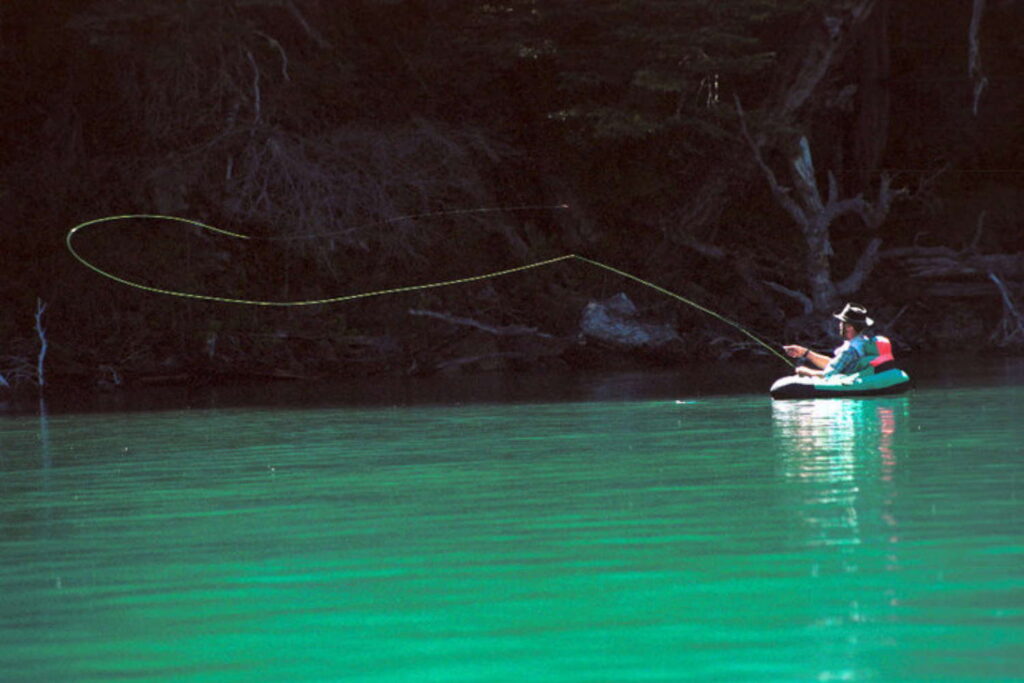
Belly boat fishing has unique challenges, but with a few tips, it can be mastered just as easily as regular angling.
Belly boating is a great way to experience your favorite fishing spot from a brand-new perspective. While it does require some practice, you will quickly learn the tips and tricks for keeping yourself steady in this unique craft.
When casting, you need to make sure the line doesn’t hit the water by lifting your arm higher and stripping in more than usual before beginning again.
Believe it or not, craft stability is also key; if any breeze is behind you and false casts are kept at a minimum while fins provide support for positioning – then belly boating will become second nature!
To maximize success when casting from a belly boat, practice proper techniques to maintain your position and prevent tangles. This involves being beneficial to keep any items jutting out of the rear (like nets or extra rods) away from where you’re casting to reduce snags as much as possible.
Additionally, one may need some time adjusting to their traveling directions – rowing forward is likely going to cause backward drifts with fly lines involved! As you cast forward, your line will inevitably end up dragging back – so make sure to stop or add slack before casting again! However, ‘trolling’ streamers by kicking strongly while holding onto your fly – provide convenient stationary fishing action!
Additionally, managing the excess fly line when stripping is tricky. With a belly boat, tangles and the excess line can quickly become an annoyance, and loops tend to get stuck on parts of the boat and need careful attention. To avoid any ungainly loops that might interfere with casting, make sure your line is free before you cast off!
Tips For Fishing From Belly-Boat
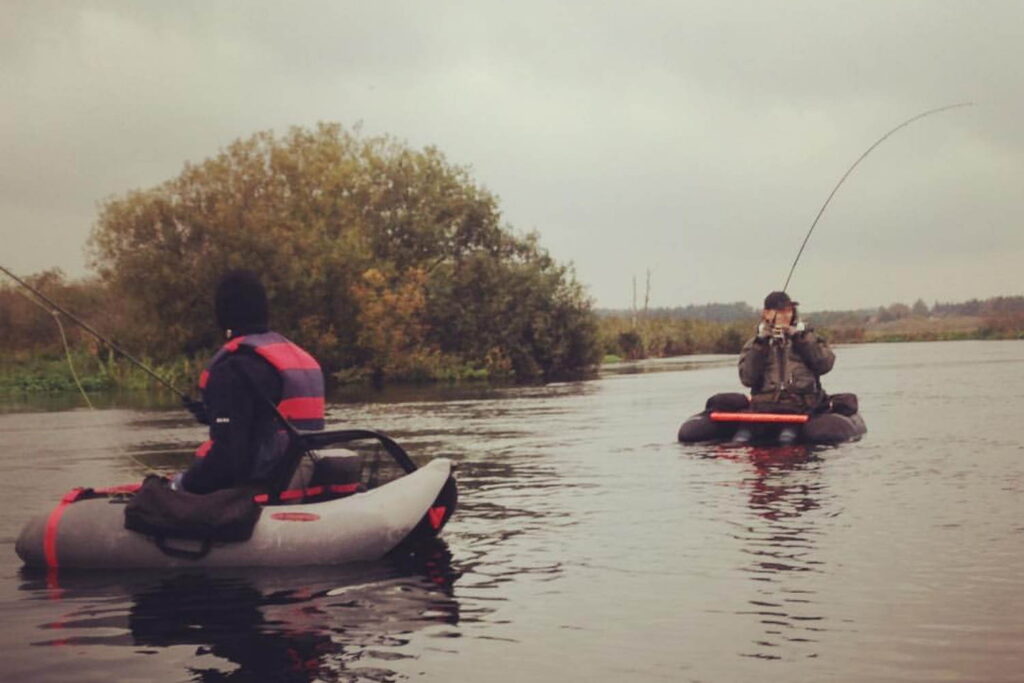
Do not inflate the Belly-Boat unnecessarily and check the tubes if necessary.
Maximize your Belly-Boat performance by being aware of the temperature! On warm days, opt for moderate inflation to ensure an optimal experience.
During warm weather, be wary of overinflating your Belly-Boat as the material is prone to expand on its own once in contact with water. Overinflating could lead to serious damage to the inner tubes and potential bursting.
Hunting trips in warm, sunny weather require extra caution! Ensure that the Belly-Boat is not overinflated as its tubes may expand and burst. To prevent this from happening on a hot day, check to see if air needs to be released or cool them by lightly watering them – an effective precautionary measure practiced regularly during summer hunts.
Get a lockable plastic transparent box to store everything you need
Out on a day-long hunt but running out of room for supplies? Maximize your fishing experience with a lockable, waterproof storage solution! Keep all of your essential items secure and in one place while still having the convenience of accessing them on an all-day hunt. A plastic transparent box that fits snugly behind the backrest can provide just what you need to stay out longer without any extra worries.
To land a fish from a belly boat, do so from the side, not the front
Catch the big one with ease and less risk! From your comfortable Belly-Boat side, you can land those trophy fish effortlessly. Avoid awkward angles by leaning over bent legs – get to it from the more ergonomic fishing spot on the side instead!
Tips for Safety While Belly Boat Fishing
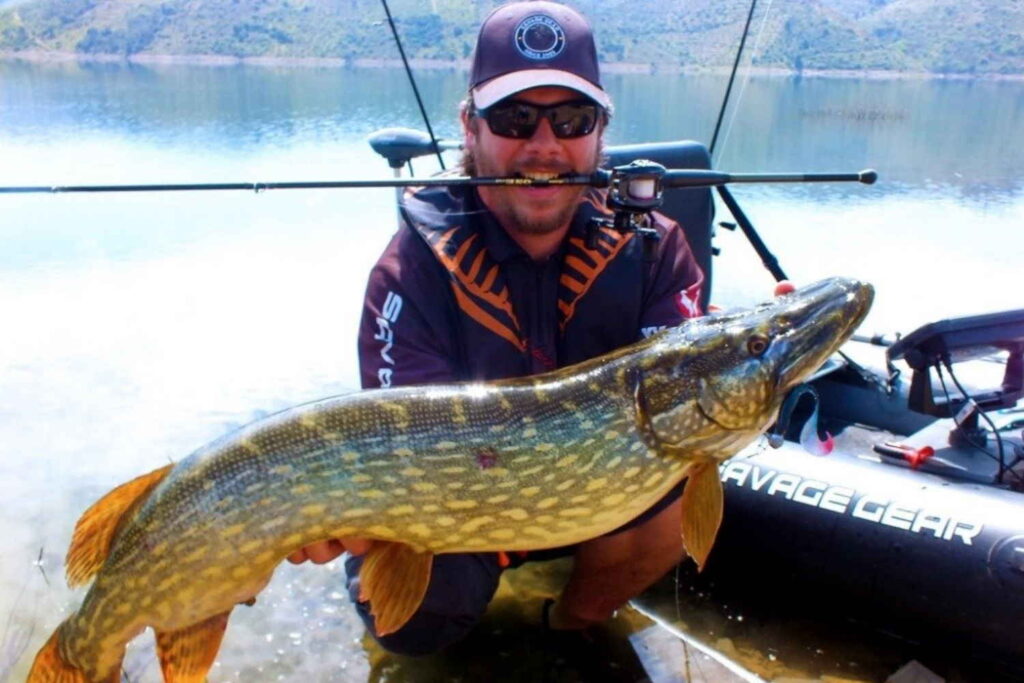
Though belly boat fishing can be an incredibly rewarding experience, safety should always come first when on the water. Here are a few tips to stay safe while out on the lake or river:
Lifejacket: Essential for any angling venture, a lifejacket is the first item on your list. Opting for one that stops short of the waist ensures it won’t get distorted when seated in a belly boat and requires manual activation instead of automated inflation when in contact with liquid – this way you avoid unnecessary surprise inflations!
Be aware of your surroundings – take note of any submerged rocks, logs, deep pools, or other obstructions that could affect your vessel’s movements. Don’t forget to look out for wildlife too!
Bring a buddy – having someone with you can help provide additional support in case of an emergency. Make sure both persons have the same experience level and are on the same page regarding safety rules. If not always ensure others onshore can monitor your progress when belly boating—never venture out alone and unattended.
Pay attention to weather conditions – check the forecast before heading out; high winds or thunderstorms can quickly turn dangerous!
Stick to small still waters: When angling on larger bodies of water, it’s wise to keep an eye out for the wind direction. Should there be a shift in the breeze that threatens your fishing excursion, take respite knowing you can always retreat to shore when navigating smaller still waters!
An essential precaution for safeguarding the vessel’s integrity is to ensure that it consists of two separate components to avoid any potential disaster in case one is punctured.
Stay warm and comfortable when wading in cold waters by wearing thermal layers under your waders or opting for neoprene-lined ones. No matter how long you’re spending time out on the water, ensure that icy temperatures won’t keep you from making memorable moments!
Fishing in the spot where a breeze comes inland ensures that should you find yourself in any difficulty during your venture, you’ll be swept to safety.
To avoid the risk of a distressing tumble, ensure your belly boat is anchored securely in shallow waters before you don fins and begin to wade into position. Have everything in place before donning fins and walking back into the shallows. Carefully sit down to avoid trips or nasty falls!
When fishing, make sure to practice proper fly management. After taking a break or switching lures, never forget that a dangling fly can snag your fins so be mindful of where you leave them!
If you’re looking to tackle the rapids and head out on a belly boat fishing adventure, please remember that safety should always come first. It’s essential to have plenty of experience before taking off – don’t forget that even experienced anglers still take caution in large rivers due to their unpredictable currents. Stay safe by never going alone and engaging with passing vessels so skippers are aware of your location at all times!
These tips should help you stay safe while enjoying this unique type of fishing. Now get out there and reel in some exciting catches from your belly boat!
How to Choose the Right Location for Belly Boat Fishing
Fishing with a Belly-Boat on the river is an exciting and feasible experience that can be enjoyed by all. Nonetheless, it’s important to exercise caution when selecting which areas of the river are most suitable for this activity to avoid any unnecessary complications. Opt for overpasses or slow water spots where there won’t be any strong currents or treacherous obstacles in your way!
For those seeking more daring fishing experiences, swimming downriver gives access to otherwise hard-to-reach places but only if you know what lies ahead – don’t take unnecessary risks when conditions may get too unpredictable like during flooding season.
If you’re looking to enjoy a fishing trip from the comfort of your Belly-Boat, private areas with salmonid fish offer an unparalleled opportunity. With its expansive, clean dam reservoirs and diverse salmonid fish populations all over, anglers will be spoilt for choice when it comes to great fishing spots. While there are some trout still waters that allow for such activity, they tend to be quite rare given their potential and cleanliness!
When it comes to union waterways – particularly those without trout – permission will only be granted where parties can engage in boat fishing or when explicitly stated by local regulations.
Maintenance
Belly boats are great for angling and easy to maintain afterward. Before heading out of the water, give your boat a refreshing rinse with fresh water and make sure it’s completely free of any debris. These boats dry quickly so you can get them ready for storage without having to wait too long. If you must pack up right away, You can always pack up a wet one for hikes out but make sure you pull it out to dry as soon as possible before packing it away safely.
To keep your belly boat in top condition for the long term, mild soap is best to use during washes. But if you’re strapped for time or resources – giving it a good rinse with water and removing any debris should suffice!
For ease of storage, you can choose between keeping your inflatable partially inflated or non-inflated, but not fully inflated. Choosing the former may take up a bit more space but saves significant time when it’s ready for use!
Conclusion
In conclusion, belly boat fishing is something that all anglers should try. There are a variety of benefits to using this method compared to other types of fishing—from having unrestricted access to deeper waters and more control over casting and retrieves to being able to get closer than ever before with the fish below you.
You’ll need the right gear and it’s important to keep safety in mind when out on the water. Make sure you get a stable pontoon platform that’s easy to maneuver, holds enough capacity for your equipment, fits your body well, and can stay afloat.
Having a basic understanding of different techniques and tips can also greatly increase your chances of success when fishing from a belly boat. For these reasons alone, belly-boat fishing should not be overlooked by anglers looking for an exciting angling experience—so why not give it a try once? Who knows, even just one time may be enough to have you hooked!
Thanks for reading our article. If you have any questions, leave a comment below. You can see more posts on our website here.
Further reading

